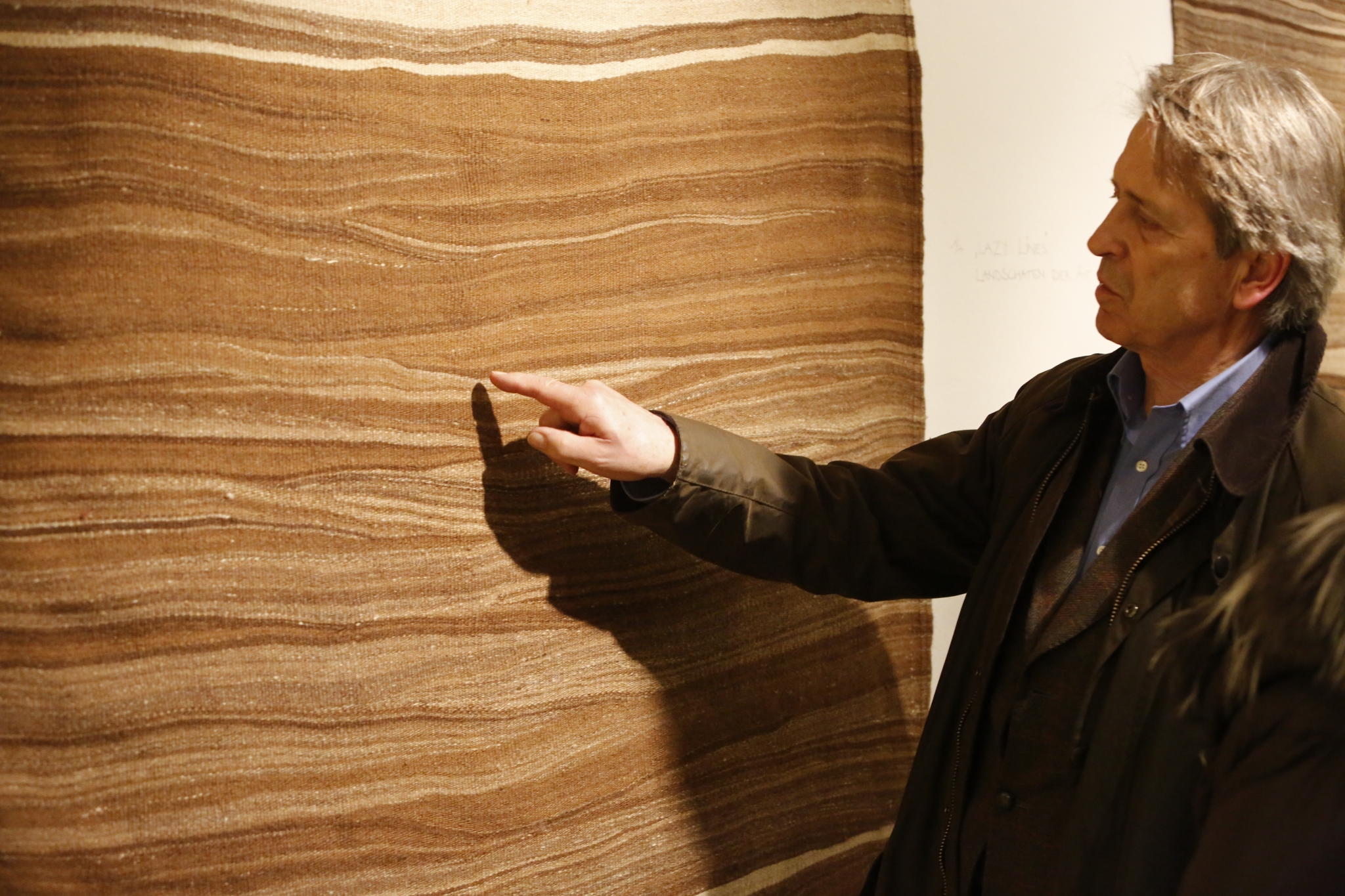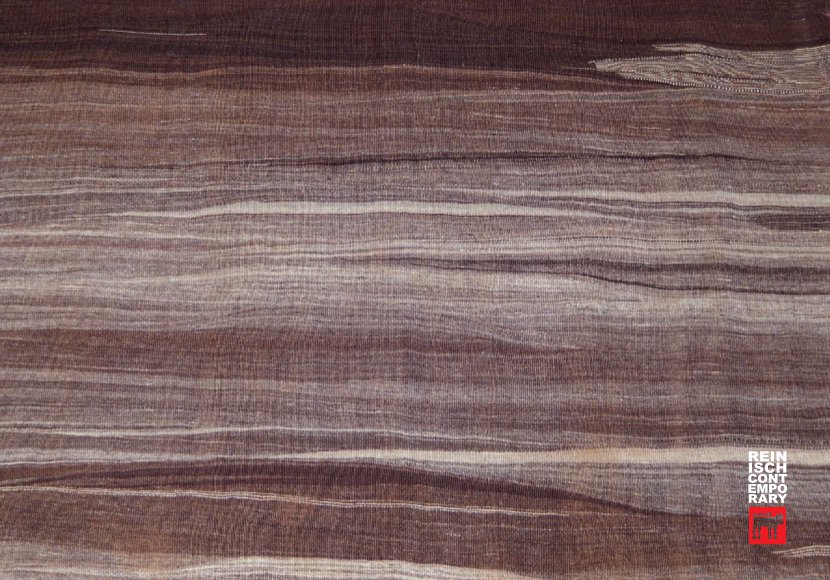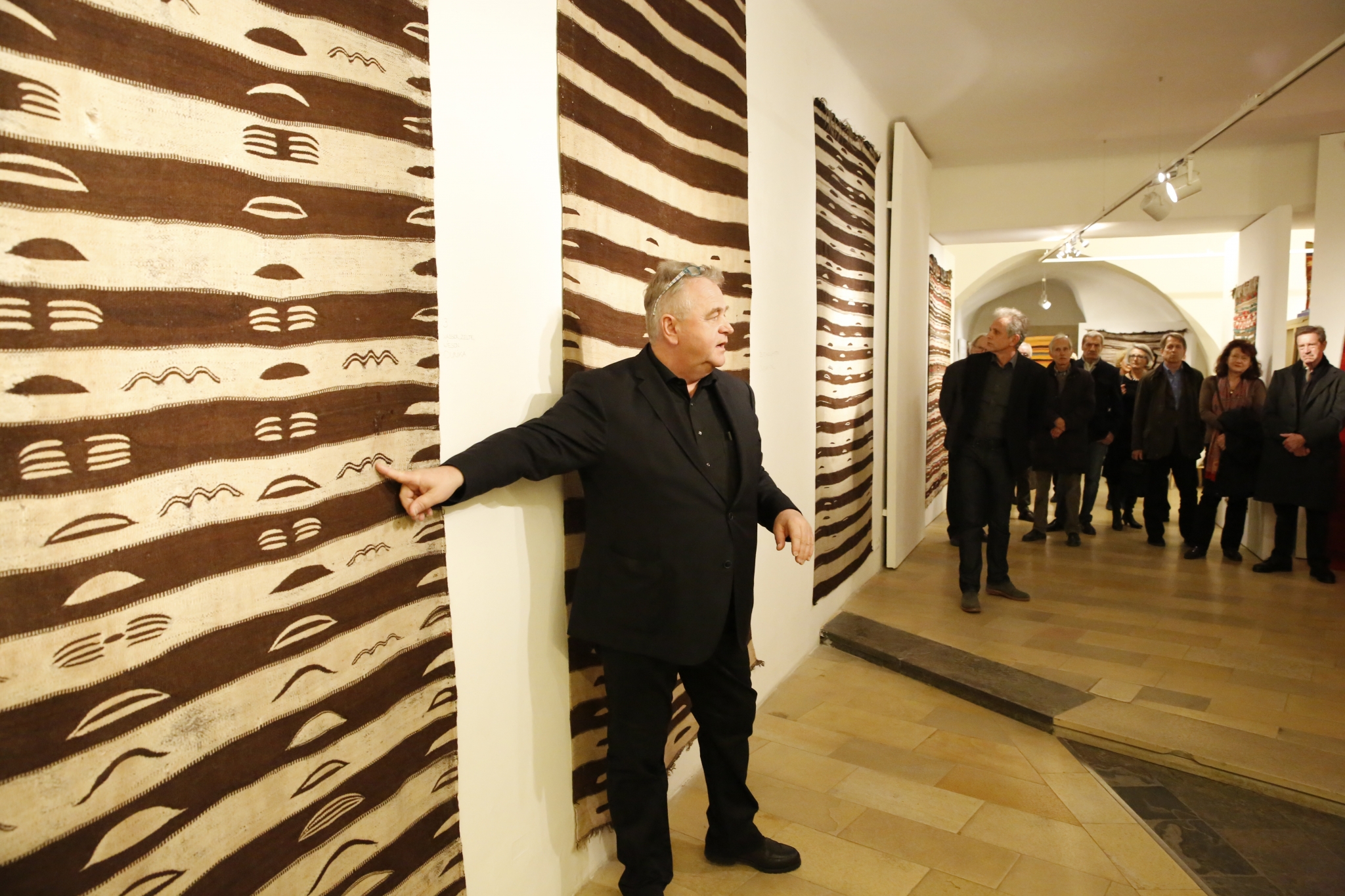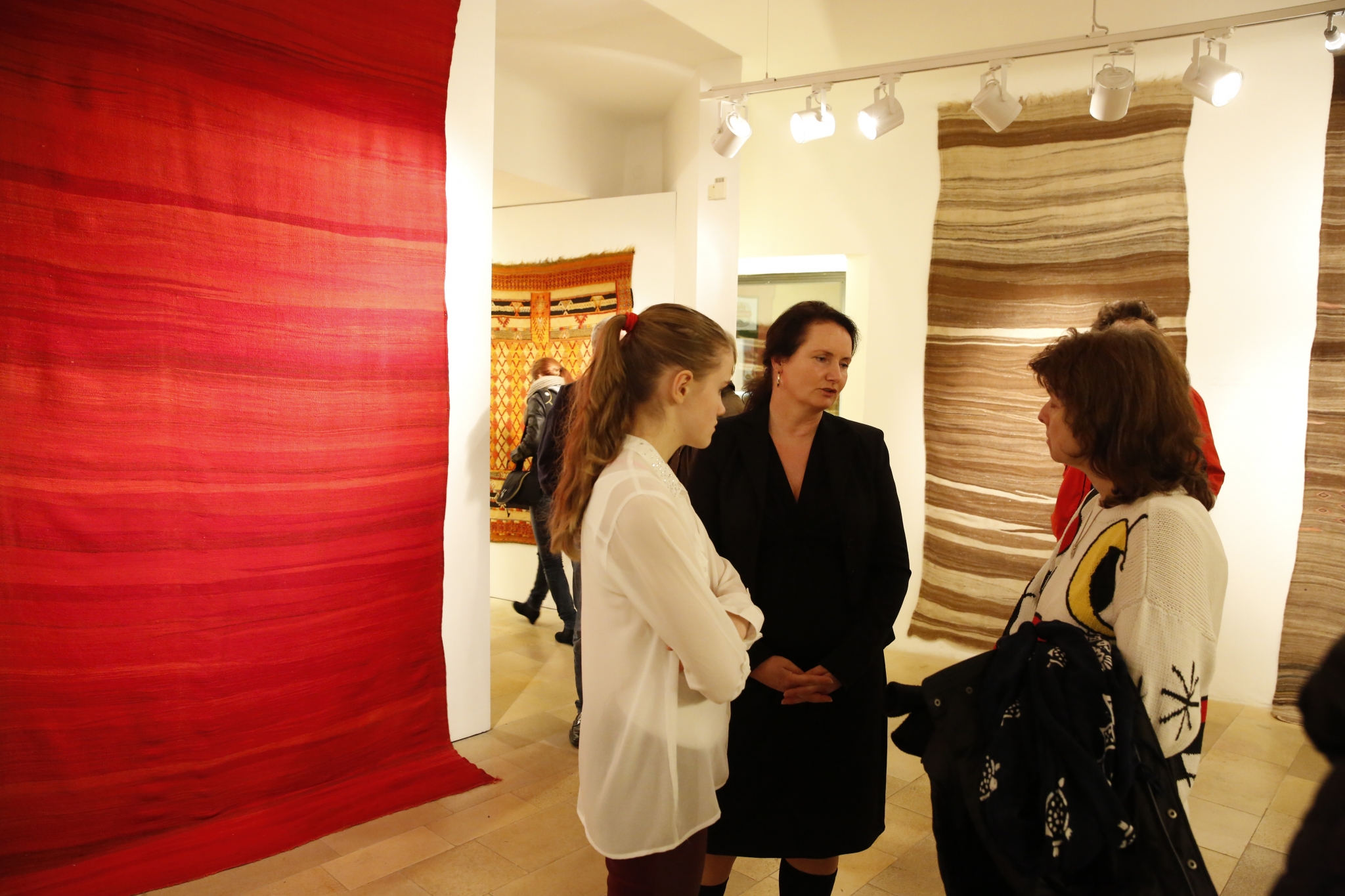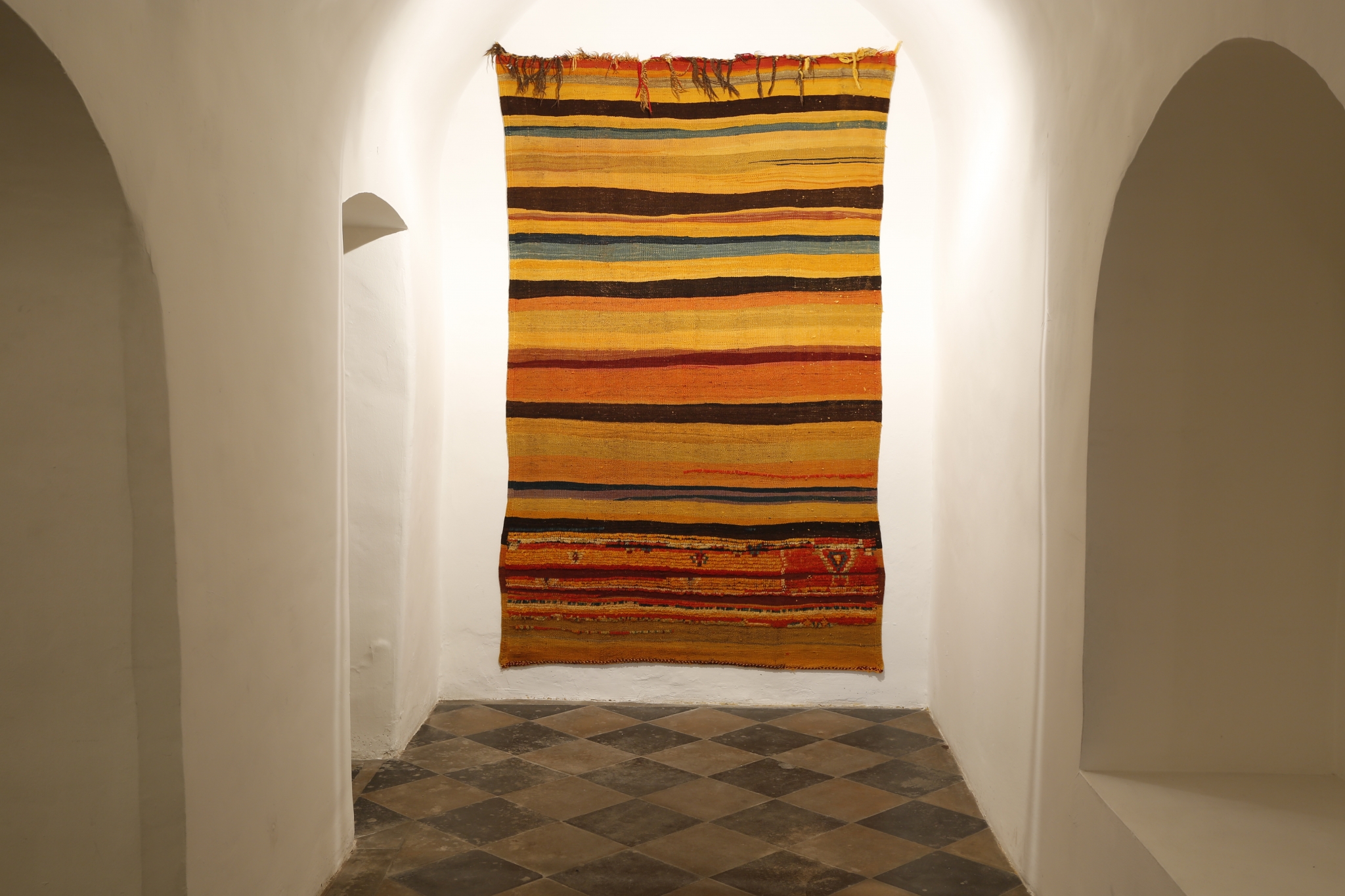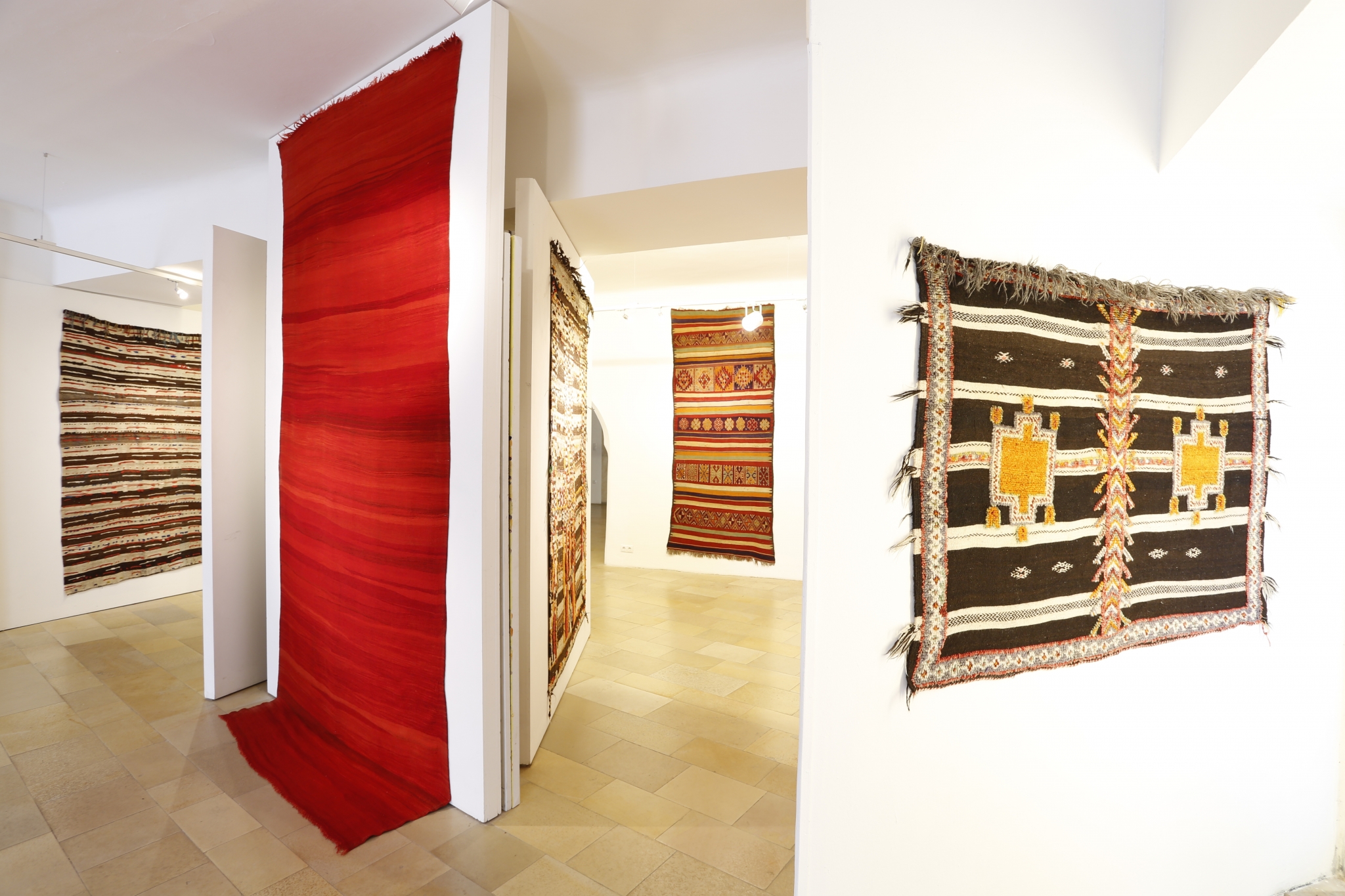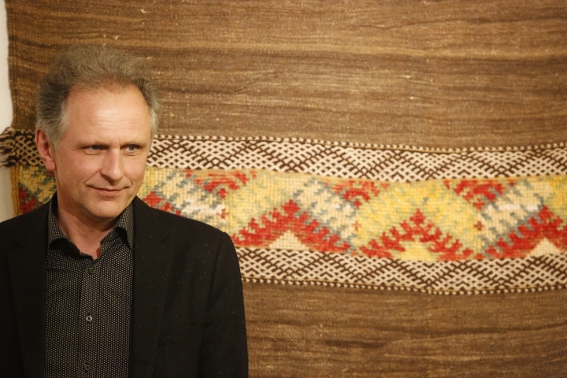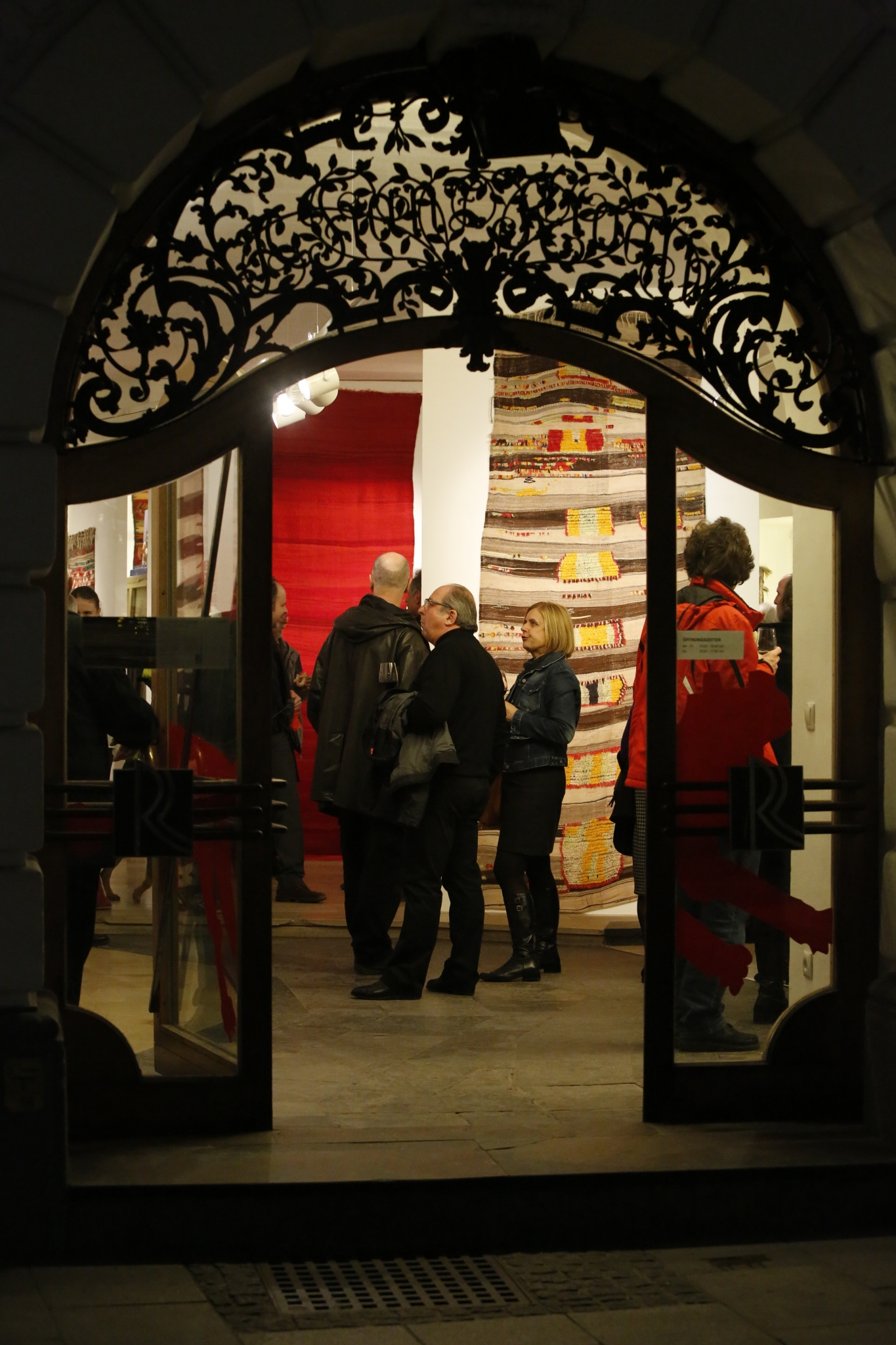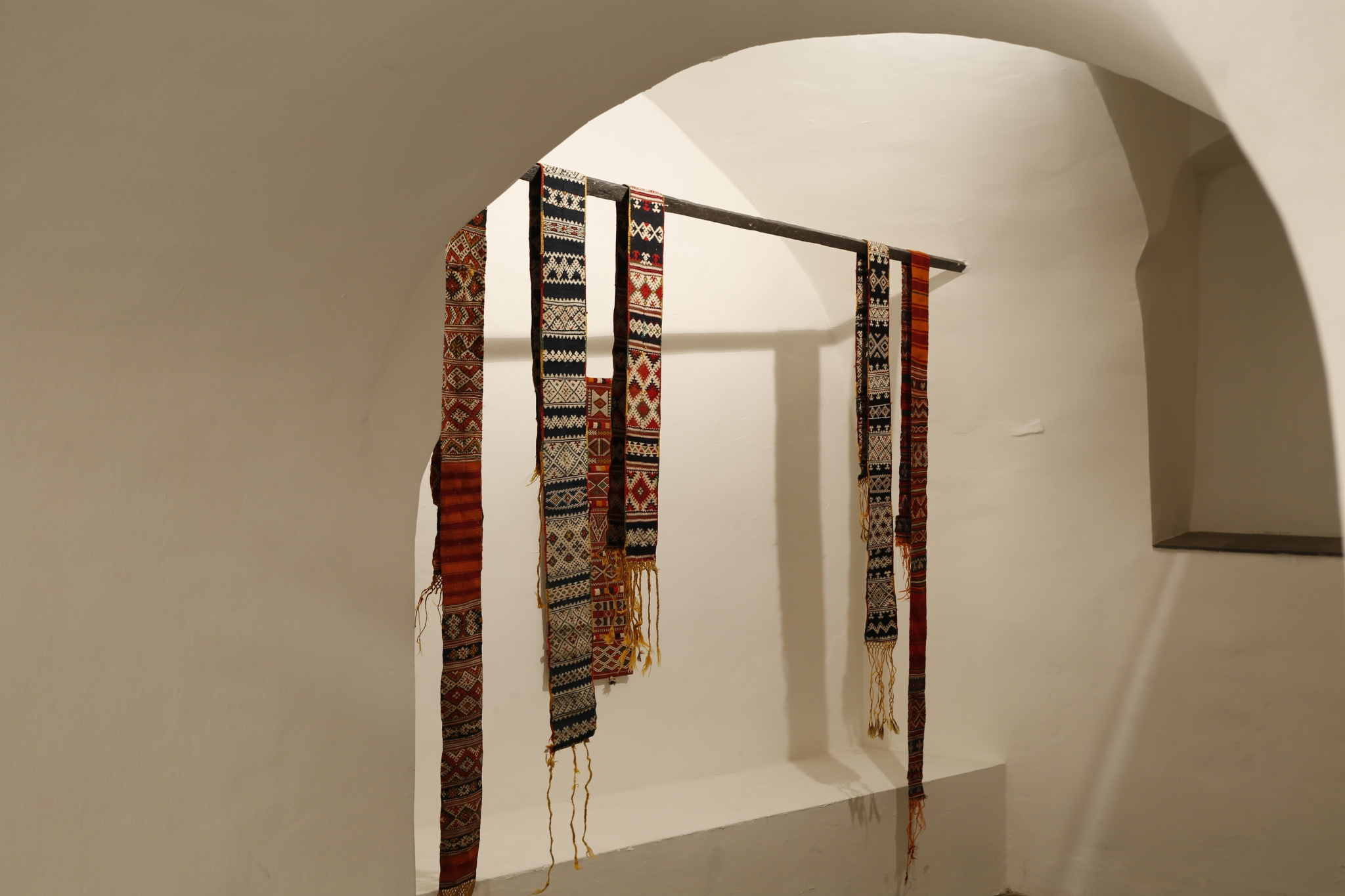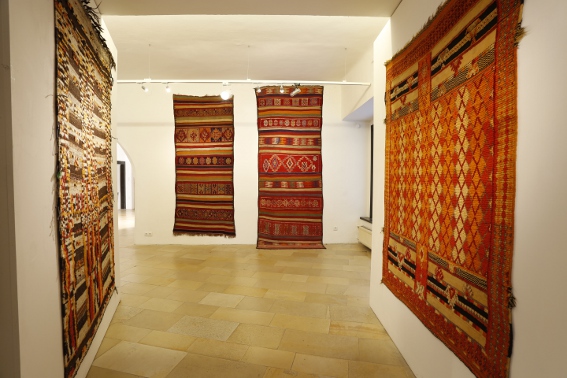27th February – 22th March 2014
Current global dynamics are marked by the dissolution of distance and proximity, and it makes sense to also examine relevant art and cultural movements in this light. This is a massive trend in the realm of contemporary art – just think of the large-scale fine-arts events of recent times.
Suddenly, cultural traditions – which are commonly seen as hermetic and only of interest to specialists – become the centre of attention. One such category, which is presently enjoying a certain boom in this context, is textile art. Numerous exhibitions – from Munich to Paris – have been showing artists’ work with textiles. Carpets and various other woven products play a significant role in this field. The diversity of imagery and forms of knotted and woven pieces is not rarely associated with the imagery of occidental culture. Parallels – whether occurring by accident or on purpose – are present and expressed in any number of ways.
With this exhibition, the art gallery Reinisch Contemporary dedicates itself to Moroccan Kilims, a very specific section of the discourse of art. Kilims are often linked to flat-woven products of the Central Asian tradition, such as from Persia and Anatolia, or all the way to Bosnia. Hierarchically, Kilims always ranked below knotted carpets – for a long time they were practically considered byproducts. As interior design objects they are often associated with the private ambiance of the upper middle classes – also in Austria. Let us not forget that, up until the beginning of the 20th century, Austria was virtually a neighbour of the Orient.
The Kilim is more limited in its material and technical conditions than the knotted carpet, which allows for manifold formal solutions. Within its limits, however, Kilim art in the classic countries of origin attains a startlingly high degree of complexity. Here, abstraction is accompanied by a certain geometric compression of originally concrete elements (animals, plants or mythical creatures).
Morocco’s carpet culture differs significantly from that of the rest – undoubtedly partly because of its location on the geographical periphery. Certain regional autonomies were able to develop much more freely here – further removed from the classical forms of the near East – and were received enthusiastically, especially in correlation with modern art, but also later.
The Moroccan carpet ought to be seen as closely related to narrative imagery and objects – often landscapes. In both colour and form, one can easily discern gentle dunes and the seasonal qualities of fields, meadows and deserts. Apart from these narrative Kilims, with their high visual impact, there is also the tradition of geometric abstraction. Not unlike in fine arts, this was also borne out in a duality between objective legibility or illusion, and abstract two-dimensionality. Such pieces are evidence of a complex compression of the strictly ornamental.
In cultures where the panel painting never gained traction, the question arises as to how this is compensated. In that sense, carpets, Kilims and various other textile products are also forms of painting, of a consciousness of imagery. These images follow a logic we know from very advanced forms of avant-garde art, such as multi-functionality.
The basic artistic concept of carpets (and also of Kilims) includes, of course, their purpose and their function. Aesthetic autonomy, which is a prerequisite for occidental artworks of the modern and contemporary periods, is not applicable here. Here, one is dealing with images that exist not just to look at, but also to touch – visible painting and tactile sculpture.
Günther Holler-Schuster
